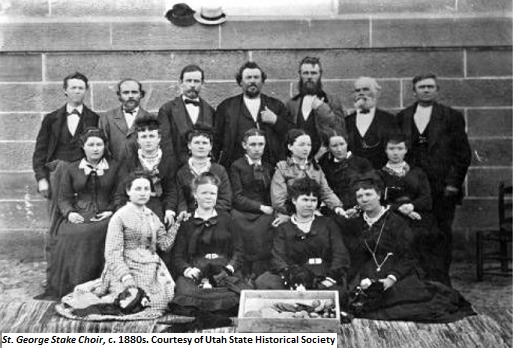Dublin Core
Title
Description
A friendship between a Mormon settler and a Catholic priest led to the performance of an all-Mormon choir at a high mass in St. George.
In 1879, the Mormon Tabernacle in St. George became the site of a Catholic High Mass. Miners, many of them Catholic, had been drawn to Washington County by the rich silver deposits around Silver Reef at the county’s northern end. Wanting to strengthen this and other growing Catholic communities in Utah, Lawrence Scanlan, a priest connected to the Archdiocese of San Francisco, volunteered to move to the territory. Scanlan crisscrossed the still sparsely settled region ministering to his fellow Catholics in mining camps and railroad towns.
When Scanlan arrived in Washington County, he struck up a friendship with a local Mormon settler named John Macfarlane who encouraged the priest to celebrate a high mass in southern Utah. Scanlan replied that he didn’t have access to a building that could accommodate the potential crowd. So Macfarlane approached Erastus Snow, the Mormon ecclesiastical leader over the region, in the hopes that he’d let Scanlan use the LDS tabernacle in St. George. Snow agreed.
No doubt, the highlight of the “tabernacle mass” was the music performed by an all Mormon choir. Scanlan’s friend, John Macfarlane, had organized the choir several years before and offered its services to the priest. The musical group practiced diligently in the weeks leading up to the mass, even learning Latin in order to perform their task with precision.
Creator
Source
Image: St. George Stake Choir, c. 1880s. Their director, John Macfarlane, is pictured here in the middle of the back row. Macfarlane became friends with Lawrence Scanlan, who held mass at the St. George Tabernacle. Courtesy of Utah State Historical Society.
_______________
See the March 1995 collection of the History Blazer, a joint project of the Utah State Historical Society and the Utah State Centennial Commission. The History Blazer can be found on the Utah History Suite CD available from the Utah State Historical Society. Also see Bernice M. Moody’s entry on Lawrence Scanlan in the online Utah History Encyclopedia.

